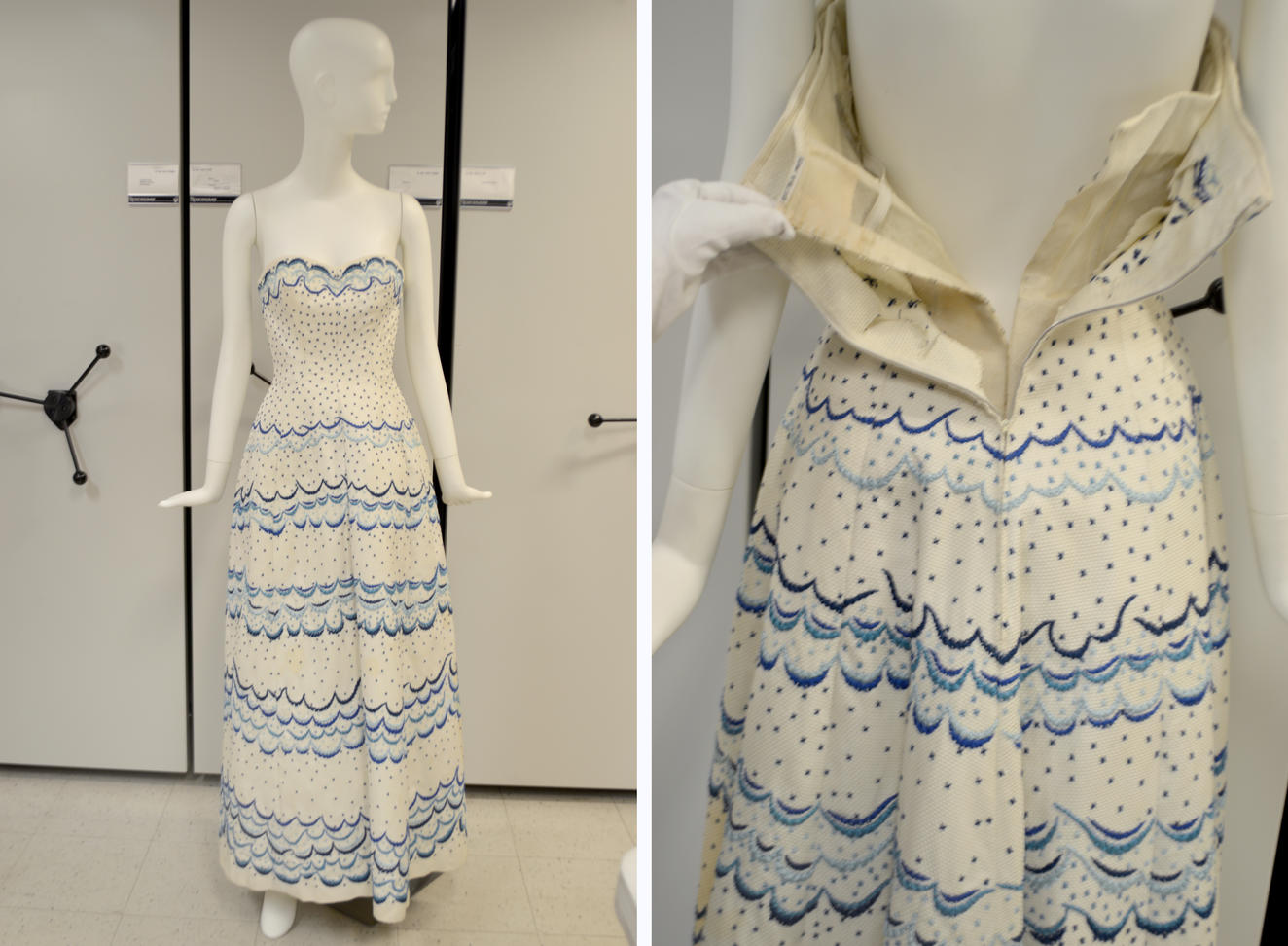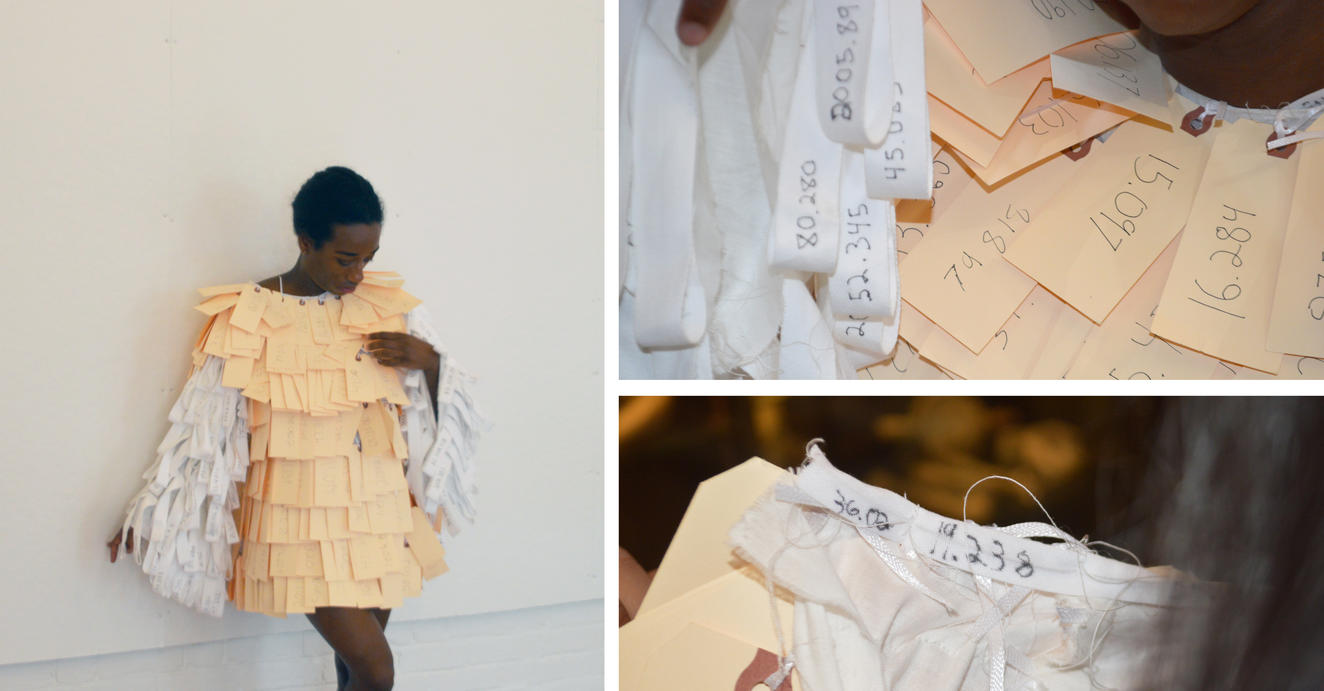There are many tasks involved in keeping a museum running, and an important one is the tagging process. No, not the Banksy kind, but rather the tedious task of making sure every object in the museum is assigned a number, recorded both in the database and on the object itself. For obvious reasons, this tagging process makes the life of a museum employee much easier and more efficient, allowing them to look up items either digitally or in storage. With a collection as large and diverse as the RISD Museum's Costume and Textiles department, thousands of items need to be sorted and identifiable with relative ease.
My experience in the Costume and Textiles department this summer has been truly fabulous. I learned many things over the last few months, but the first thing I learned was how items were tagged. To tag a textile or piece of apparel in the museum, first you must determine what is appropriate and safe for the item. If the piece is permanent and a garment, it will be given a twill tape tag, hand sewn delicately into the sleeve of the piece. If it is a rolled textile or something like a hat or shoes, it will usually be given a small hanging tag. The non-accessioned items will be given a manila tag that is attached in a non-permanent way. In examining the collection you can also see previous tagging systems, in which numbers were written directly on the piece—which can cause damage—or small cloth tags were sewn onto the lining, making the process of searching for a specific item extremely difficult. Additionally, handling the clothing too often and having to move parts of it to find the tag can cause wear and damage on the pieces, especially when they are fragile after existing for hundreds of years.
To speak to and highlight the history of the tagging that is so important to the RISD Museum’s collection, I have created a piece of clothing that is itself representative of the system. With twill tape as the sleeves and manila tags making up the body, the materials represent what is currently used and their relative location on the garments. The numbers on the tags are also accurate to real pieces in the collection. There are numbers located on the inside collar of the piece to represent the less-considered system that was replaced by the current tagging process.
The last few months have made a large impact on my life and have given me new respect for the monumental task that museums undertake to ensure that the public can view pieces of art that have withstood the passage of time. From the Napoleonic era to modern-day Louis Vuitton, the RISD Museum preserves and displays these works of art. Over time systems change and pieces get damaged, but I believe there is an inherent beauty to these effects. It was my pleasure to have helped preserve and catalog amazing pieces like these for future generations to enjoy and be inspired by.
Esmeralda Goncalves was the 2018 Andrew W. Mellon Summer Intern in Costume and Textiles. She is a junior at RISD majoring in Apparel Design.



